African wild dogs are also known as “African hunting dogs,” “African painted dogs,” and “African painted wolves.” These canines are cooperative hunters, and work together to capture prey. Wild dogs are declining in numbers, and listed as Endangered on the IUCN Red List. Read on to learn about the African wild dog.
Description of the African Wild Dog
African wild dogs are multicolored canines that somewhat resemble a calico cat in color. The fur on their muzzles and throats, as well as much of their bodies, is black. They have large blotches of tan or yellow color, and smattering of white, throughout their coats.
This dog’s coat is unique among canines, as it is made up entirely of rough guard hairs, and no undercoat. The wild dog also sports a large pair of ears, and a moderately-elongated muzzle.
Interesting Facts About the African Wild Dog
African wild dogs are unique creatures, with beautiful painted coats and skilled cooperation techniques. They are unfortunately on the decline, and are endangered by human interaction, which puts them in danger of extinction.
- What’s the Danger? – African wild dog populations are estimated to be around 6,600 individuals total. This population is broken up into 39 different, fragmented, subpopulations. Each subpopulation is so separated from the next that they rarely reproduce with one another.
- What’s in a Population – What’s even more concerning about the African wild dog population is the number of breeding Though there are 6,600 or so adults, the number of breeding individuals is much lower at an estimated 1,400 dogs.
- The Problem of Social Structure – Though there are many more adult dogs, groups of African wild dogs consist of a pair of alpha dogs, and they are the only animals allowed to reproduce. If any other females in the pack breed, their pups are quickly killed. This means that, while there are 6,600 adult wild dogs, only 1,400 are actually producing pups.
- The Problem of Fragmentation – African wild dogs are incredibly sensitive to habitat destruction and fragmentation. Farming and development encroach into wild dog ranges, causing increased conflict. This separation reduces the likelihood of wild dogs in two populations interbreeding, cause inbreeding, and reducing genetic diversity. This also increases instances of farmers killing wild dogs to protect their livestock.
Habitat of the African Wild Dog
Wild dogs live mainly in grasslands, savannas, and arid zones. They generally avoid forested areas, because trees can obstruct their hunting ability. Instead of stalking prey, which requires dense vegetation for cover, wild dogs hunt in the open.
They use their numbers to pursue prey, and work together in the open to bring down game. While they prefer to avoid these areas, they will travel through mountain forests, scrub, and woodland areas while pursuing prey.
Distribution of the African Wild Dog
Historically, African wild dogs could be found from Sub-Saharan Africa across the entire continent, absent only in rainforest habitats and the harshest deserts. Today, however, African wild dogs have been eradicated from most of their former range.
They are virtually extinct in North and West Africa, and their numbers are low in Central and northeast Africa. Most wild dogs are found in South Africa, and southern East Africa.
Diet of the African Wild Dog
Wild dogs are carnivores, which means that they eat meat. Their most common prey items are Thompson’s gazelles, impala, springbok, reedbuck, kob, and lechwe. African wild dogs have also been known to eat wildebeest, African buffalo calves, warthogs, duiker, zebras, ostrich, waterbuck, and bushbuck. They generally choose larger prey items, because they hunt in packs, but they have been known to eat rabbits, insects, cane rats, and dik-dik.
African Wild Dog and Human Interaction
Destruction of habitat is the leading cause of African wild dog decline. Wild dogs roam over long distances to search for prey, and fragmented habitat can increase conflicts with farmers, collisions with cars, and accidental trapping in snares set for other animals.
Separating populations causes fragmentation. When wild dogs cannot reach other populations of wild dogs they tend to breed with close relatives more often. This decreases their genetic diversity, and can cause mutations and disease.
Domestication
Unlike domestic dogs, African wild dogs have not been domesticated in any way.
Does the African Wild Dog Make a Good Pet
Even if African wild dogs were suitable as pets, it would be irresponsible to own one. At this point, every animal of breeding age is important for the survival of the species.
African Wild Dog Care
In zoos, African wild dogs are part of a Species Survival Program (SSP) that selects the most genetically diverse animals to breed. They are kept in packs, and are provided with plenty of enclosure space to exercise and play.
Zookeepers also provide their dogs with environmental enrichment in the form of toys, puzzle feeders, ice blocks, and more. They are fed a diet of commercially produced carnivore meat made for zoo animals, and supplemental additions of bones, rats, and more.
Behavior of the African Wild Dog
African wild dogs are extremely social species, with very strong bonds to one another. They are more social than lions or hyenas, and solo animals are extremely rare for this reason. Wild dogs live in packs up to 27 individuals and their pups. The dominant pair of dogs are the only ones in a pack that are allowed to breed.
Reproduction of the African Wild Dog
After the dominant female breeds, she has a gestation period of 69 – 73 days. They produce the most pups per litter of any canine. Litters can be anywhere from 6 – 16 pups, but the average is 10. Because litters are so high in numbers, if any other females were to reproduce, the pack would not be able to feed the pups.
The mother will keep all other pack members away from the pups until they are 3 – 4 weeks old, which is when they begin to leave the den and start eating solid food. The pups are weaned at 5 weeks old, and at 8 – 10 weeks they begin to follow along on hunts.

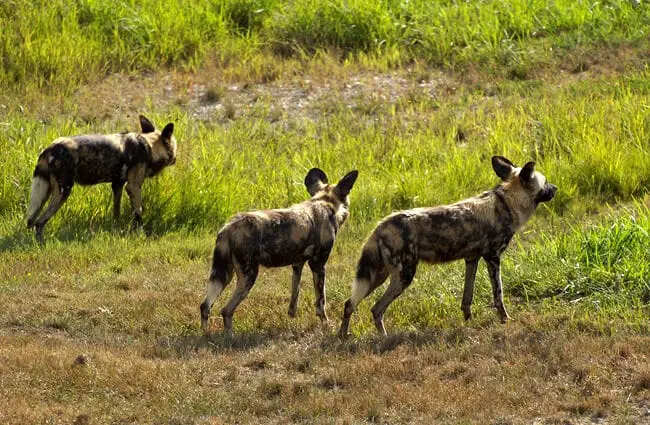
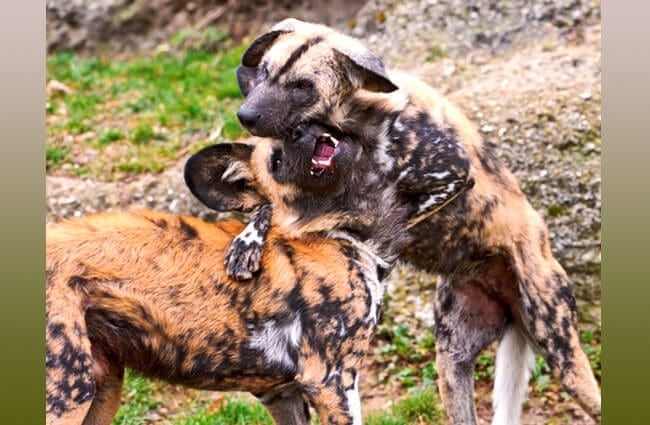
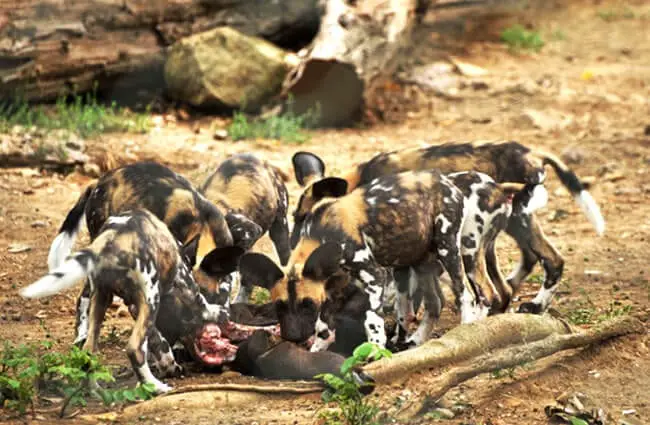
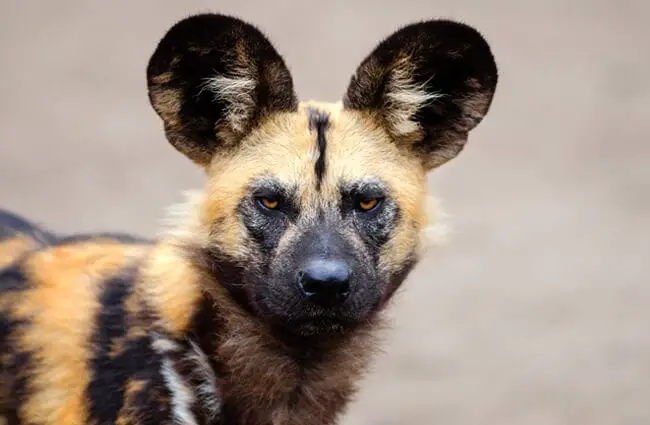

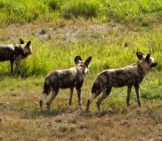

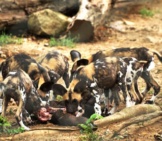
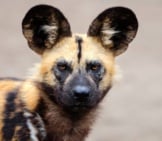
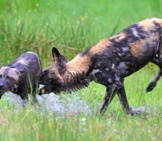
![Red Angus Closeup of a beautiful Red Angus cowPhoto by: U.S. Department of Agriculture [pubic domain]https://creativecommons.org/licenses/by/2.0/](https://animals.net/wp-content/uploads/2020/03/Red-Angus-4-238x178.jpg)












![Red Angus Closeup of a beautiful Red Angus cowPhoto by: U.S. Department of Agriculture [pubic domain]https://creativecommons.org/licenses/by/2.0/](https://animals.net/wp-content/uploads/2020/03/Red-Angus-4-100x75.jpg)

